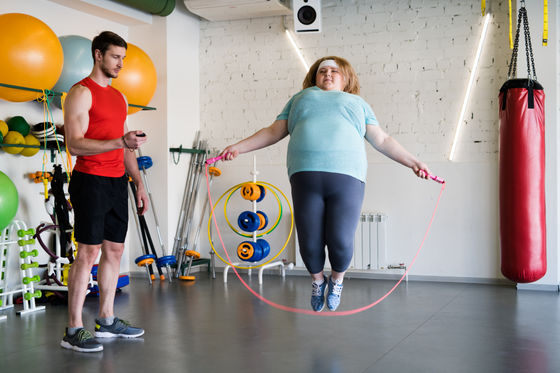Researchers report finding a way to turn fat cells into 'calorie-burning cells'

A research paper has been published on a method to change cells that store excess calories as fat into cells that burn fat. This discovery, which showed that cells that were previously thought to be created only from stem cells can be created from fat cells, is expected to provide a boost to the progress of obesity treatment.
JCI - White adipocytes in subcutaneous fat depots require KLF15 for maintenance in preclinical models
Scientists Discover How to Make Ordinary Fat Cells Burn Calories | UC San Francisco
https://www.ucsf.edu/news/2024/06/427971/scientists-discover-how-make-ordinary-fat-cells-burn-calories
Scientists May Have Figured Out How to Make Fat Cells Burn Calories: ScienceAlert
https://www.sciencealert.com/scientists-may-have-figured-out-how-to-make-fat-cells-burn-calories
Scientists unveil KLF15 transcription factor's role in white fat cells, opening new paths for obesity therapy
https://www.news-medical.net/news/20240704/Scientists-unveil-KLF15-transcription-factors-role-in-white-fat-cells-opening-new-paths-for-obesity-therapy.aspx
There are three types of adipocytes in mammals: 'white adipocytes' that store fat, 'brown adipocytes' that burn fat, and 'beige adipocytes' that have the properties of both.
In humans, brown adipose tissue (BAT) made of brown fat cells disappears within one year of birth, but beige fat cells remain in white adipose tissue (WAT) together with white fat cells. For this reason, beige fat cells are sometimes called 'brite fat cells,' meaning 'brown in white.'
The human body can naturally convert white fat cells into beige fat cells through a variety of factors, including exposure to cold and diet, so obesity treatment experts have hoped to replicate this process by maturing stem cells and inducing them to become beige fat cells.
But stem cells are rare, so Brian J. Feldman of the University of California, San Francisco decided to look into ways to directly transform white fat cells into beige fat cells.
'White fat cells are not unusual for us, and we'd be happy to give them up,' Feldman says.

Feldman knew from previous experiments that a protein called KLF-15 was linked to fat cell function, so he and his colleague Liang Li decided to look more deeply into the relationship between fat cell types and KLF-15.
First, the research team investigated mice that retain brown fat cells throughout their lives and found that the amount of KLF-15 in white fat cells was about 75% lower than in brown and beige fat cells.
Using the low levels of KLF-15 in white fat cells as a clue, the researchers then bred mice that were unable to produce KLF-15 and found that their white fat cells turned into beige fat cells, suggesting that fat cells can change into a different morphology and that the absence of KLF-15 changes the 'default setting' of fat from white to beige fat cells.
To elucidate the process of this change, Feldman and his colleagues cultured human fat cells and added
Below, the top one is a normal white fat cell, and the bottom one is a white fat cell mixed with beige fat cells due to the deficiency of KLF-15.
_m.jpg)
Scientists know that stimulating ADRB3 can lead to weight loss in mice, but when drugs that target this receptor were administered to humans, the results were disappointing: ADRB3 is key to activating brown fat in mice, whereas in humans, it's ADRB1, which may explain the poor results.
Based on these results, Feldman believes that drugs that target ADRB1 rather than ADRB3 may be more effective and offer advantages over current weight-loss injections that suppress appetite and blood sugar levels.
Also, because these drugs act on fat rather than the brain, they avoid side effects like nausea, and because fat cells are relatively long-lived, the effects may be longer-lasting.
Regarding the results of this study, which showed that white fat cells can be converted to beige fat cells simply by restricting protein production, Feldman said, 'Many people thought this was impossible to achieve. We've shown that this approach can actually convert white fat cells to beige fat cells, and that the hurdle is not as high as we thought.'
Related Posts:
in Science, Posted by log1l_ks







